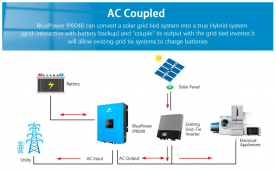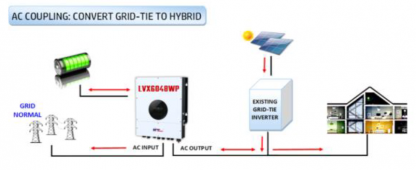Not Aerosmith
Solar Enthusiast
- Joined
- Sep 8, 2022
- Messages
- 389
It seems that an automatic transfer switch (ATS) would activate the existing grid-tie inverters when the grid is up and work as originally installed. Therefore, an ATS could activate an off-grid inverter when the grid is down.
Since neither inverter works at the same time, it seems that the same solar panels could be connected to both inverters. Although, I believe that I need to add a relay to disconnect the solar panels from the off-grid inverter. Upon loss of grid power, the relay closes and the off-grid inverter is connected to the solar panels.
The advantage is that instead of a gasoline driven generator as backup power, we could use a solar driven inverter as backup power. In my case I would probably add 5 kw off-grid inverter with 10 KW of batteries. My current grid-tie system is (3) 5 KW inverters with 57 solar panels and no batteries.
My existing grid-tie system works great, so I don't want to revise it with new hybrid inverters not fully debugged or only works with a critical load panel. I want to add a second system for whole house backup power. Any reason why this shouldn't work? Any affordable suggestions?
Since neither inverter works at the same time, it seems that the same solar panels could be connected to both inverters. Although, I believe that I need to add a relay to disconnect the solar panels from the off-grid inverter. Upon loss of grid power, the relay closes and the off-grid inverter is connected to the solar panels.
The advantage is that instead of a gasoline driven generator as backup power, we could use a solar driven inverter as backup power. In my case I would probably add 5 kw off-grid inverter with 10 KW of batteries. My current grid-tie system is (3) 5 KW inverters with 57 solar panels and no batteries.
My existing grid-tie system works great, so I don't want to revise it with new hybrid inverters not fully debugged or only works with a critical load panel. I want to add a second system for whole house backup power. Any reason why this shouldn't work? Any affordable suggestions?
Last edited:




